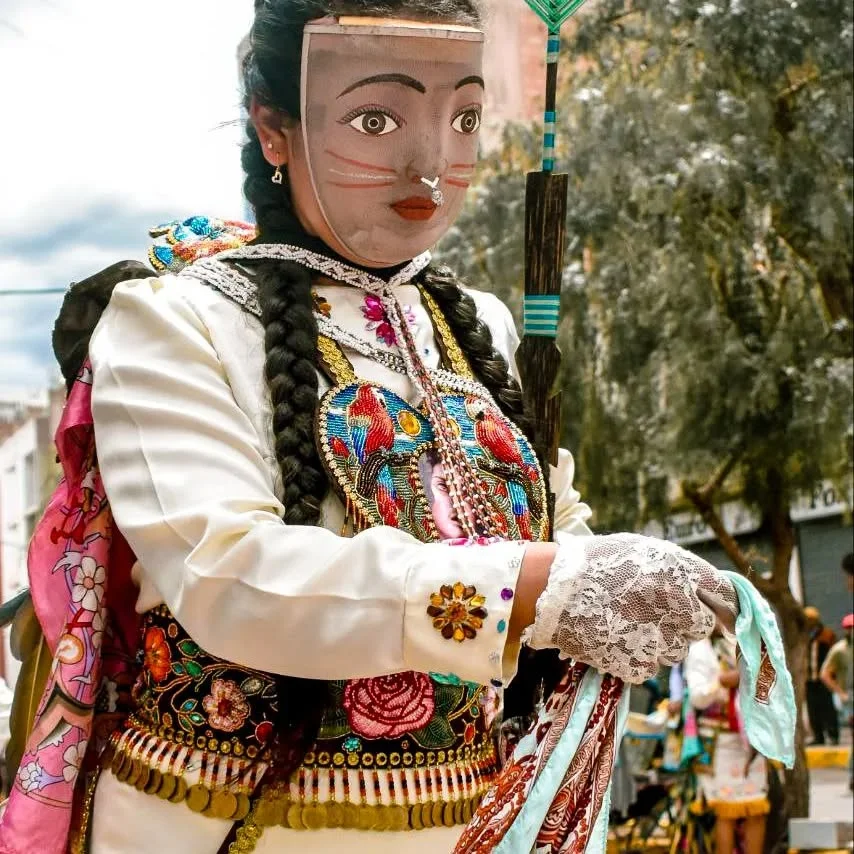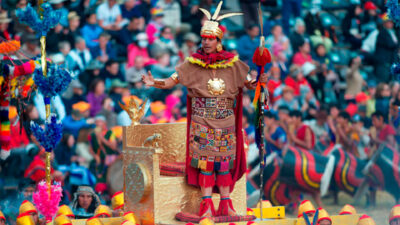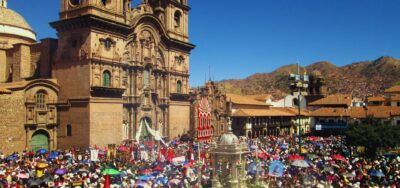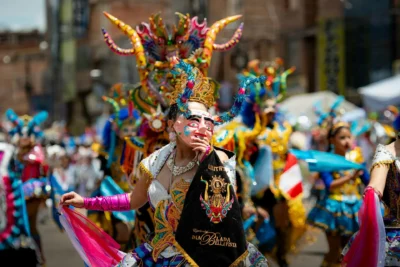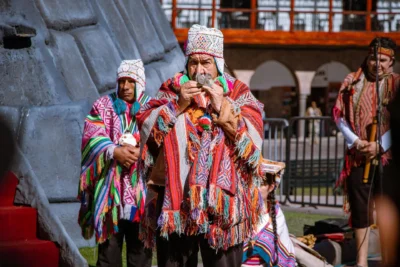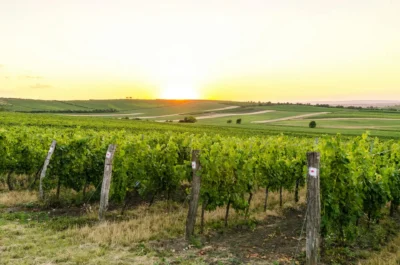The Feast of the Virgen del Carmen, also known as “Mamacha Carmen,” is one of the most important religious celebrations in Peru. Full of devotion, color, and music, this festivity attracts thousands of visitors each year who gather to honor the patroness of mestizos and the town of Paucartambo. In this guide, we’ll explore the history, meaning, and vibrant traditions that make this celebration unforgettable.
Where is the Virgen del Carmen festival held?
The Feast of the Virgen del Carmen takes place in Paucartambo, a picturesque town located in the Cusco region. While the Virgin is venerated in many parts of the country, Paucartambo is the heart of this celebration, attracting faithful and tourists eager to experience its unique blend of faith, culture, and tradition.
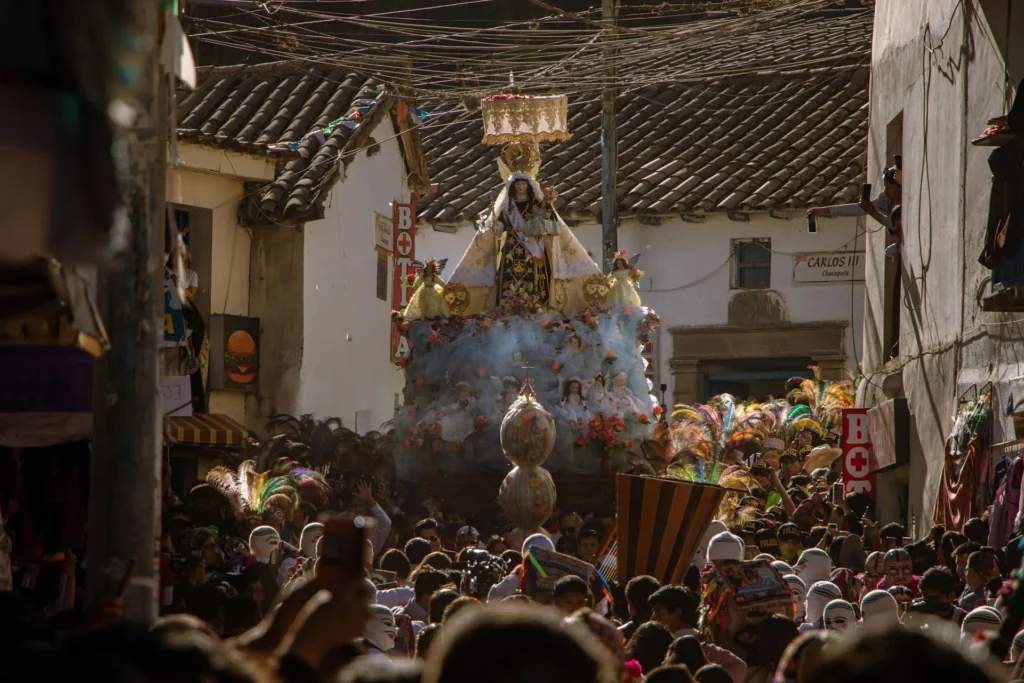
The Importance of the Virgen del Carmen in Paucartambo
The Virgen del Carmen is considered the spiritual protector of Paucartambo. According to tradition, her image was found by local farmers near the town. Since then, she has become a symbol of unity for the community, representing the link between the spiritual and the cultural. Her role as a mediator between the earthly and the divine is a cornerstone of this festival.
History of the Virgen del Carmen of Paucartambo
Devotion to the Virgen del Carmen in Paucartambo dates back to colonial times. Spanish missionaries introduced this Marian figure as part of their efforts to evangelize the region. Over time, indigenous religious practices fused with Christian devotion, creating a cultural syncretism that comes to life in the dances, songs, and ceremonies of the festival.
How is the Virgen del Carmen festival celebrated?
The festival takes place each year from July 15 to 18. During these days, Paucartambo transforms into a scene of religious fervor and joyous celebration. The event includes processions, solemn masses, and theatrical performances blending religious and social elements. The highlight is the main procession, where the Virgin’s image is carried through the streets accompanied by dancers and traditional music.
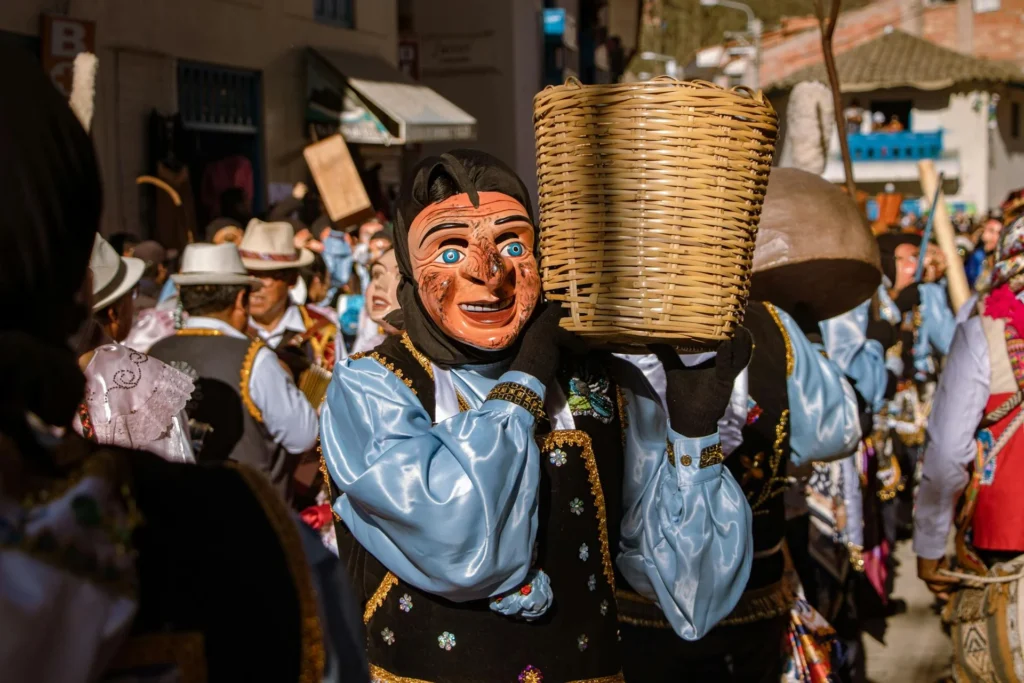
Location and how to get to Paucartambo
Where is Paucartambo located?
Paucartambo is located about 110 kilometers east of the city of Cusco. This town, sitting at 2,900 meters above sea level, is known for its mountain scenery and rich cultural traditions.
How to get to Paucartambo?
From Cusco: You can take a bus or shared taxi directly to Paucartambo. The trip takes about 3 hours and offers spectacular views of the Sacred Valley and the Andean mountains. Organized tours: Many Machu Picchu and Cusco travel agencies offer packages that include transport, lodging, and guides to enjoy the celebration.
Tres Cruces Viewpoint
If you visit Paucartambo during the Virgen del Carmen festival, don’t miss the Tres Cruces Viewpoint, located just outside the town. This spot is famous for offering a unique sunrise spectacle, where the sky turns into a canvas of vibrant colors. Tres Cruces is a great addition to your visit, offering a peaceful moment of reflection amid the celebration.
Main dances of the Virgen del Carmen in Paucartambo
Traditional dances are one of the most distinctive features of this festival. Each dance group represents different characters and elements of Peru’s culture and history. Below are some of the most iconic dances:
Qhapaq Ch’uncho
This dance represents warriors from the jungle. Their colorful costumes and energetic movements symbolize the connection between Paucartambo and Amazonian communities.
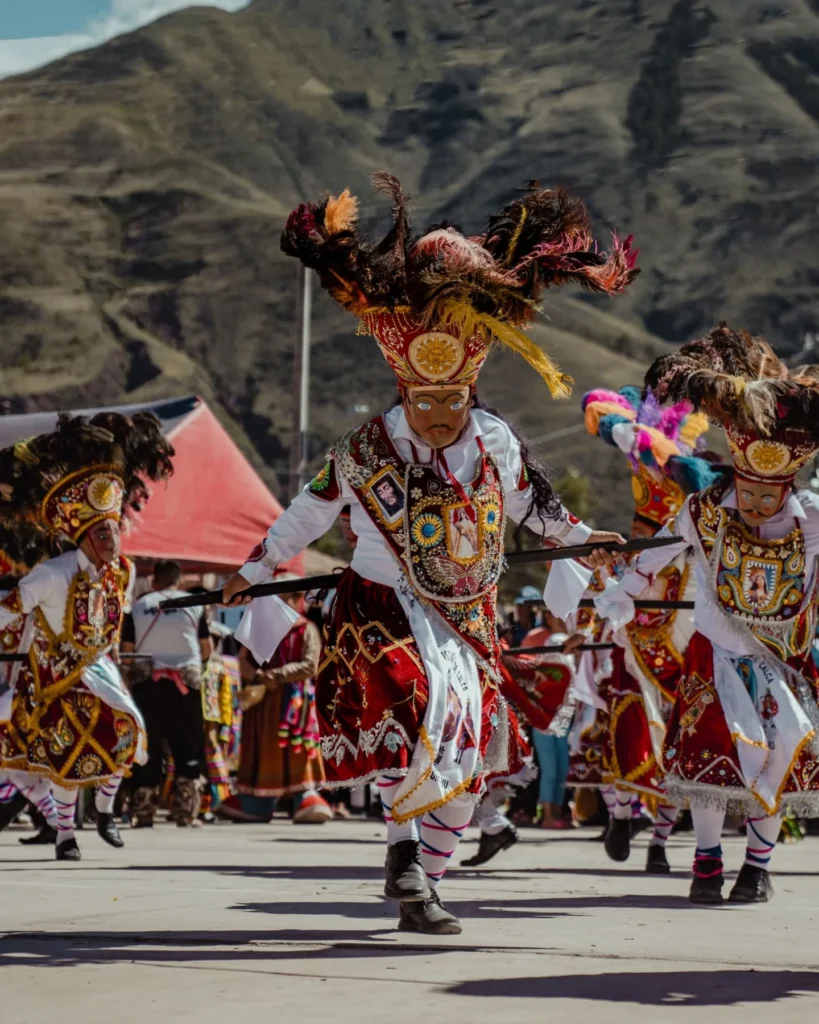
Qhapaq Qolla
The Qolla dancers represent merchants from the Andean highlands. Their masks and outfits reflect the cultural richness of the Andes.
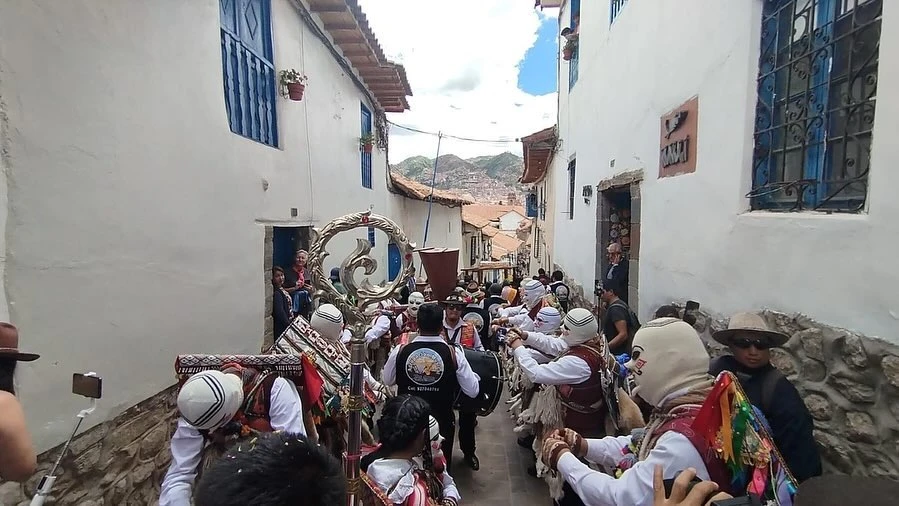
Qhapaq Negro
This dance is a tribute to Peru’s Afro-descendant population, with rhythms and movements that evoke their traditions and contributions to the nation’s cultural identity.
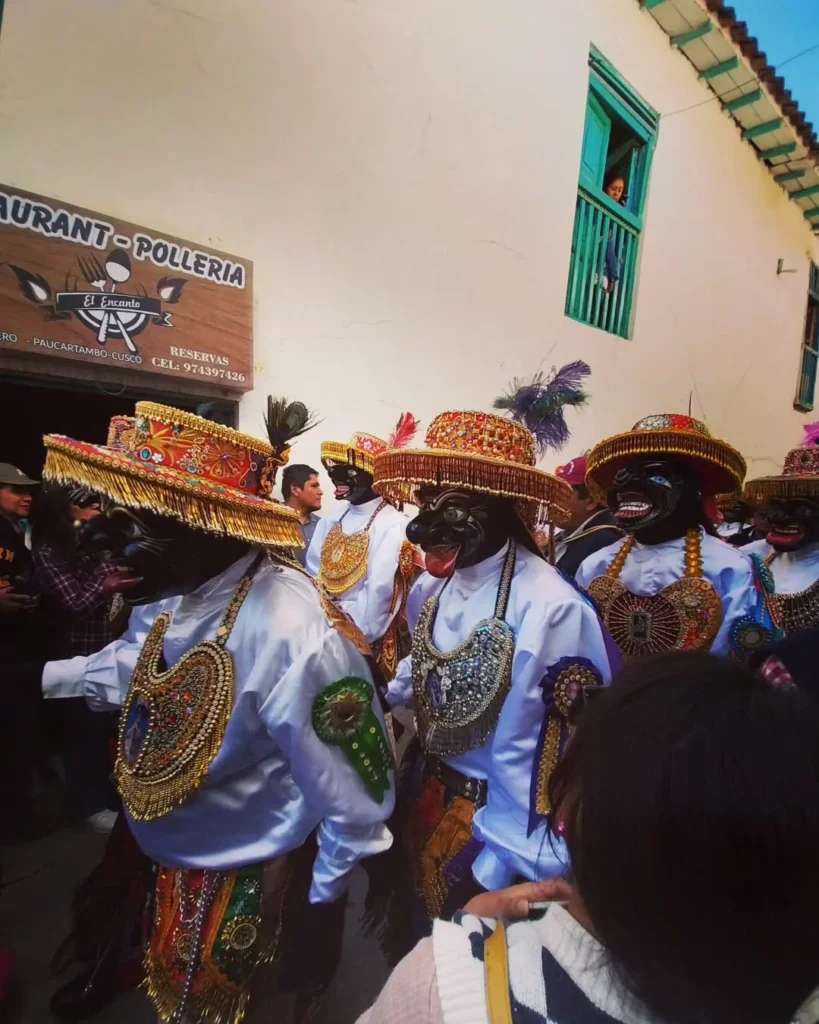
Saqra
The Saqras, or “devils,” add a dramatic and humorous touch to the celebration. With grotesque masks and theatrical movements, they interact with the audience as they accompany the procession.
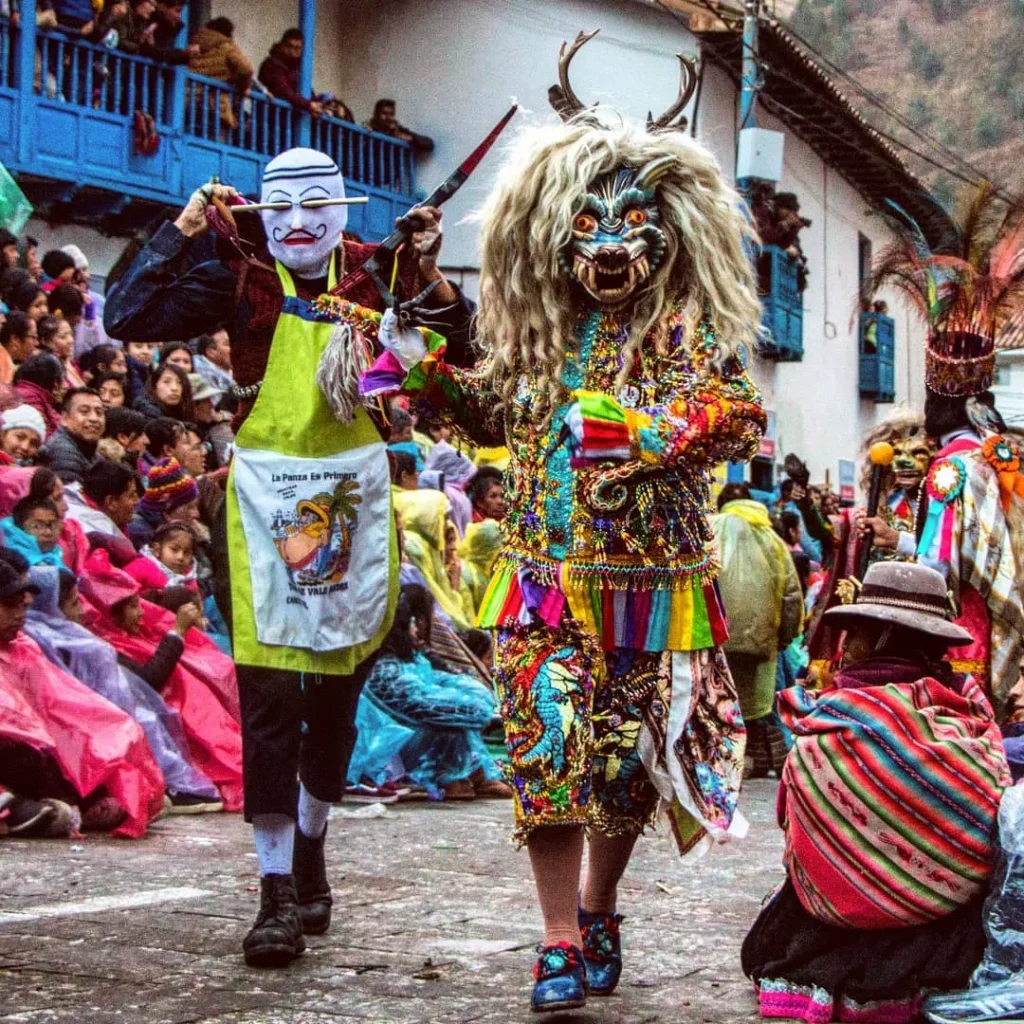
Danzaq
Known as “scissor dancers,” these performers display impressive acrobatics and synchronized steps, showcasing physical skill and endurance.
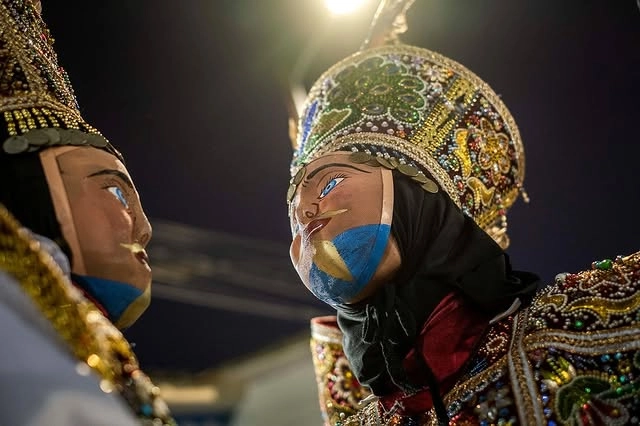
Chunchachas
This dance is performed by young women, representing the grace and joy of Indigenous communities.
